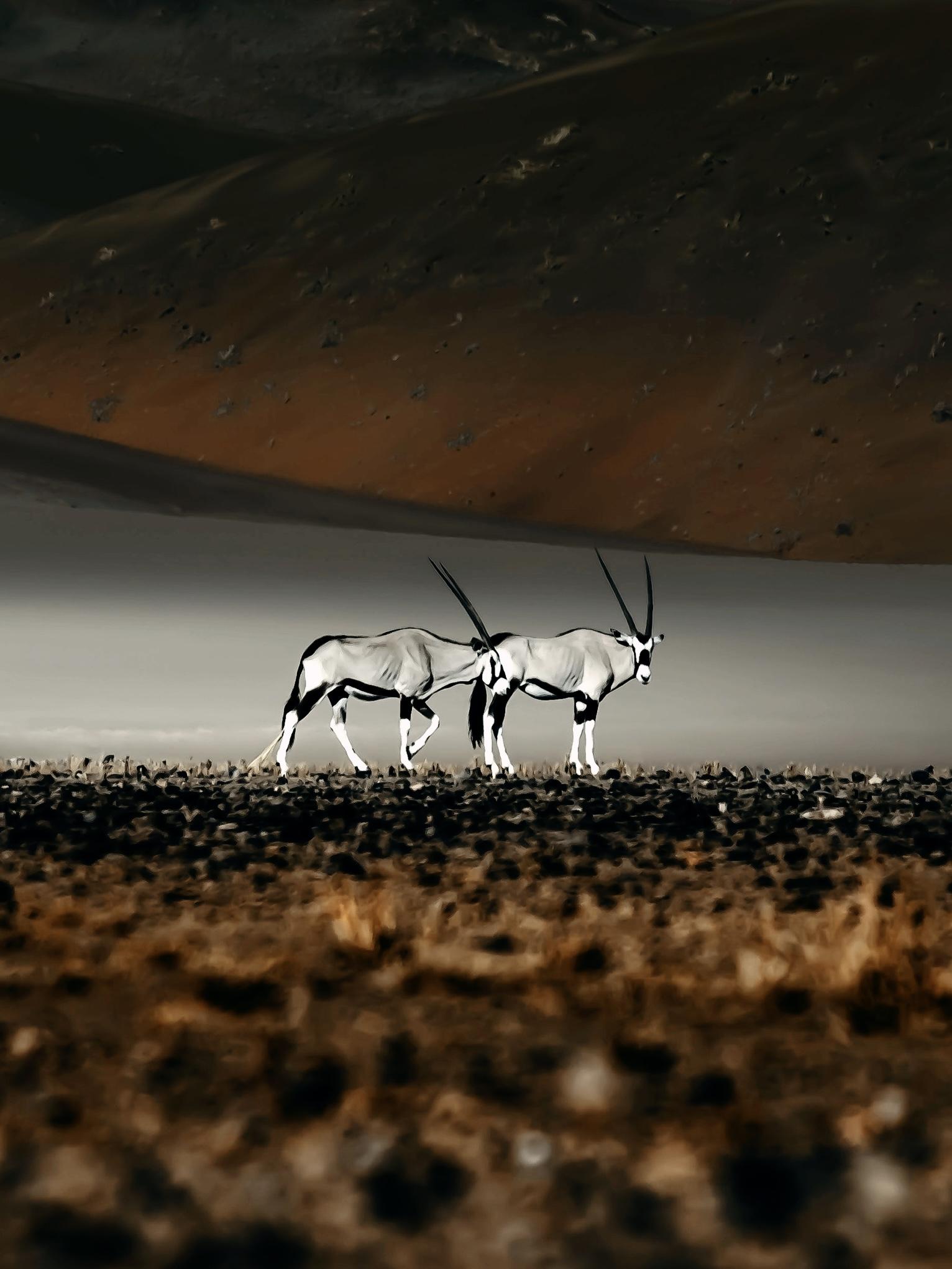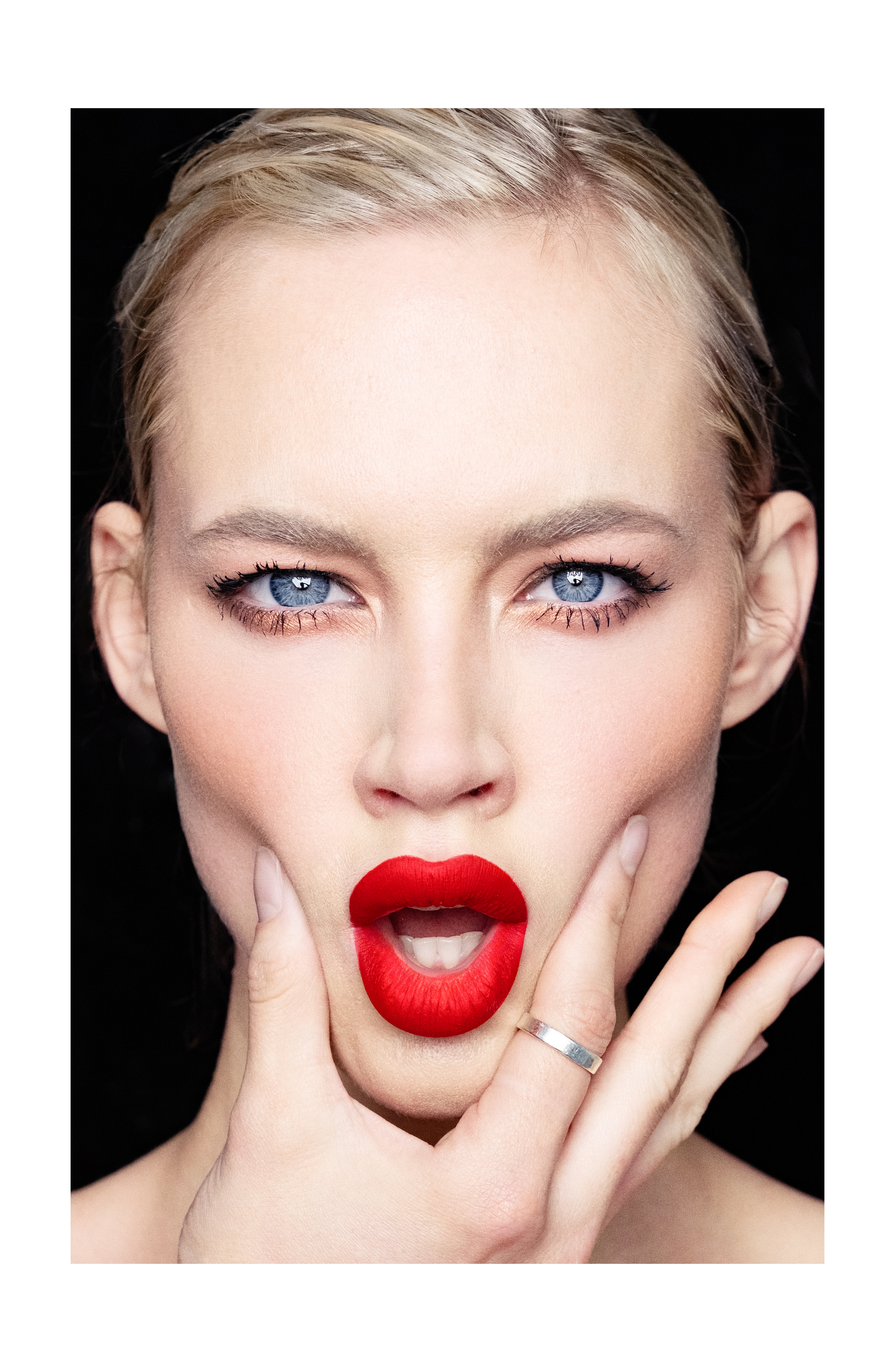The Art of Seeing in Wildlife Photography By Peter Delaney, FUJIFILM X-Photographer
When I look back at my journey as a wildlife photographer especially as I scroll through my images on my editing screen a few things become apparent, firstly most of my pictures were either action or close up portrait and secondly the editing was awful.
That’s why we wildlife photographers on safari head straight for the waterhole especially in the dry season as that is the best place to capture wildlife action photography. But what do we do when all is quiet at the waterhole, and there is no action to photograph. How do we create a compelling photograph? The most important thing to remember is that we are crafting a picture.

We all know that a successful photograph needs a good composition. Some rules and guides can help you create an image. But it is your “vision” that will make it unique and compelling. That is what we all want from our photography no matter what genre, to stand out from the crowd to be different and for people to recognize our style.
Firstly I will talk about the guides and rules that are important in creating a composition. Then I will discuss how you can improve your “vision” your unique way of seeing.

Rule of Thirds
Ask any photographer about rules of composition and the rule of thirds will slip off their tongue, for some photographers it is all they will ever use. There are numerous rules of compositions that can aid you to be more creative with your photographs. I have often heard, and I am sure you have too, “there are no rules in photography, or learn the rules and forget them”, there may be some merit in these statements, I will leave that discussion to others, but for me and my photographic journey, increasing knowledge of my craft every day has helped me make better photographs. I want to discuss just a few rules, guides and tips that I use most when out photographing.

Negative Space
Negative space is one of my favourite rules of composition. I place the subject in the frame using either the golden ratio or rule of thirds; mostly I go with what feels right. Remember rules are only guides. For “Negative space” to work in a composition, it is essential that there are no distracting elements within the scene.
This kind of image works best with a solitary subject with a clean background in an open space. I try and not include clouds as this will give the image a different feel and distract from the subject. Negative space creates a sense of calm and allows the image to breathe.

Patters and Texture
Shape, lines, form and textures are essential elements of successful landscape black and white photograph. But we can make beautiful compositions in nature photography with these elements too.
Look for interesting patterns in clouds and include them with your wildlife subjects. Clouds give you shapes and textures which create a sense of depth, a three-dimensional feel.

Check the background
The “background” of a photograph is not a “compositional rule”, but it is undoubtedly one of the most critical elements within a successful photograph.
A busy background is very distracting and will take the viewers eye away from the subject of the image and create a visual sense of unease.
Street photographers have favourite locations with beautiful backgrounds, and they wait till a subject walks pass and then press the shutter. We can do the same with wildlife photography, although it can be a lot more difficult to achieve.

On a recent safari to a location I’ve never travelled to before, I notice the distant mountains were magnificent. I immediately set about finding a waterhole with the mountains as a backdrop and then it was a matter of waiting. Elephants arrived, and within a few minutes the elephants began their usual ritual of bonding. I press the shutter capturing an intimate moment between elephants with a beautiful backdrop to complete a compelling composition.


Symmetry and Rhythm
Rules of symmetry and rhythm are two essential guides that will help you become more creative in your photography. Symmetry is achieved when one side mirrors or balances with the other. And the best-known use of symmetry in nature photography is the reflection.
In the image below with elephants on the horizon, I tried to create balance and symmetry with the elephants at either end. I included the clouds for shape, form and texture, with this adding a sense of depth, and the line created by the horizon a feeling of calm.
When photographing try and include as many compositional elements as you can to create an engaging photograph.

Patterns
Patterns appear everywhere in nature, try and photograph a pattern that has a repeated shape as in the image below of lines in the dunes. These repeated patterns will add rhythm that the viewer will easily follow. In this image, I used a low angle of view and tilted the wide-angle lens to create diagonal lines and aggerate the stormy sky which adds mood.

Correct Framing
Framing your subject correctly is a nice way to lead the viewers to your subject. With wildlife, especially with adults and young, the young will always try and shelter underneath the parents for protection, giving us opportunities to use the adults as frames as we focus on the young.

Depth of Field
Depth of field (DOF) is another useful aide to isolate your subject from a distracting background. I love to use DOF with the rule of rhythm, finding similar subjects as in the image below of the baby zebra, I focused wide open on the foal’s eye, creating a pleasing blur of the stripes in the foreground, which form a pattern and sense of rhythm.

Role of Odds
Rule of odds is not a well-known rule of composition and one that I struggle to accomplish in my wildlife photography. The theory behind the rule of odds is that the viewer’s eyes are drawn to photographs with odd numbers, and within the odd numbers the eye will be drawn to the subject in the centre.
It sounds easy enough, but in practice not so, or at least for me. I have only managed to capture one photograph that I am happy with, the lion and zebra image below, and for balance I have cropped the image to square with the horizon in the middle. The three subjects, the two zebras and lion accomplish not just the rule of odds, but the rule of balance and symmetry too. The dust gives a sense of action and movement and creates a mood within the image.

Colour Theory
Colour theory is an essential part of a successful colour image, as I tend to favour black and white photos over colour images, with colour theory something that I want to learn more about.
What is colour theory? Here you are using specific colours in a way that are harmonious. My favourite one I love to use for wildlife photography is using complementary colours, shades of cool blues and warm/orange tones which are opposite ends of the colour wheel.

It’s about your Vision
I have briefly explained some of my favourite rules of composition which will help you in the Art of seeing. But the most critical part of creating or crafting a compelling photograph is vision – your vision. That is what is going to separate your portfolio from somebody else. We can all learn to know and understand the rules of compositions.
But how can you create that unique vision, or that x- factor in your work? The only person that can do this is you!

You have to grow as an artist. How? By learning and by having the passion for increasing your knowledge of the art of photography. Look at the Old Masters’ work, be it paintings, sculptures or photography.
Look at how these artists used composition, light and colour. Study these works and if you like a particular artists work, then ask yourself why? What about his/her work is it that appeals to you?
Every time you look or scroll through your images, be your own harshest critic. I have heard photographers say they are unable to choose their best photo. If you are not able to recognise your best image, how are you going to know an excellent composition in the field?
Be selective in what you photograph. Do not shoot for the sake of shooting. A feeling should overcome you; an inner voice should be shouting at you. Then ask yourself, what is it that draws to you this scene? How can you successfully capture this feeling? What kind of mood or emotion do you want to create in this photograph?
Shoot the subject from every angle possible, use different focal lengths, different shutter speeds, and remember to check your frame since what you leave out is just as important as what you leave in. There is nothing as frustrating when you get home, download your images, and you wish that had shot the subject with a different lens, aperture or angle. Cover all the bases when you come across a subject that connects with you. And remember to try and convey that connection, mood or feeling as you edit the image. Your images must connect on an emotional level with the viewer.

When I photograph it is a balance between my mind and heart; my brain looks after the technical, my heart covers the emotion within the photograph. Too much of one will leave an emotionless image or a poorly executed image.
To sum up, I think the words from one of my favourite songs – Reverence by Faithless: “YOU DON’T NEED EYES TO SEE…YOU NEED VISION…”





